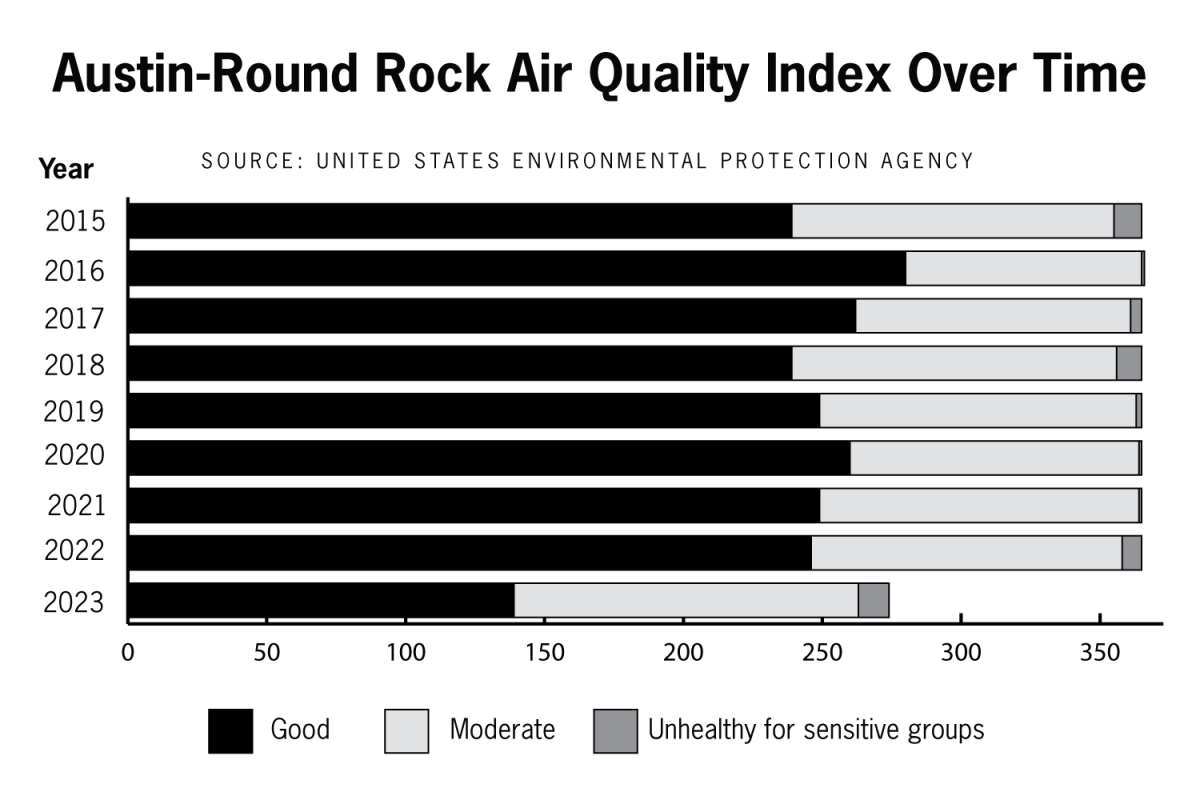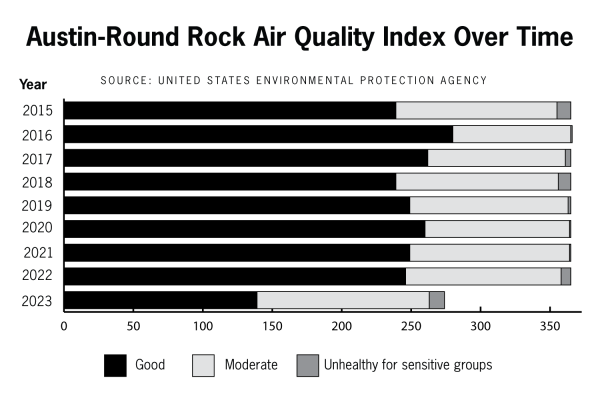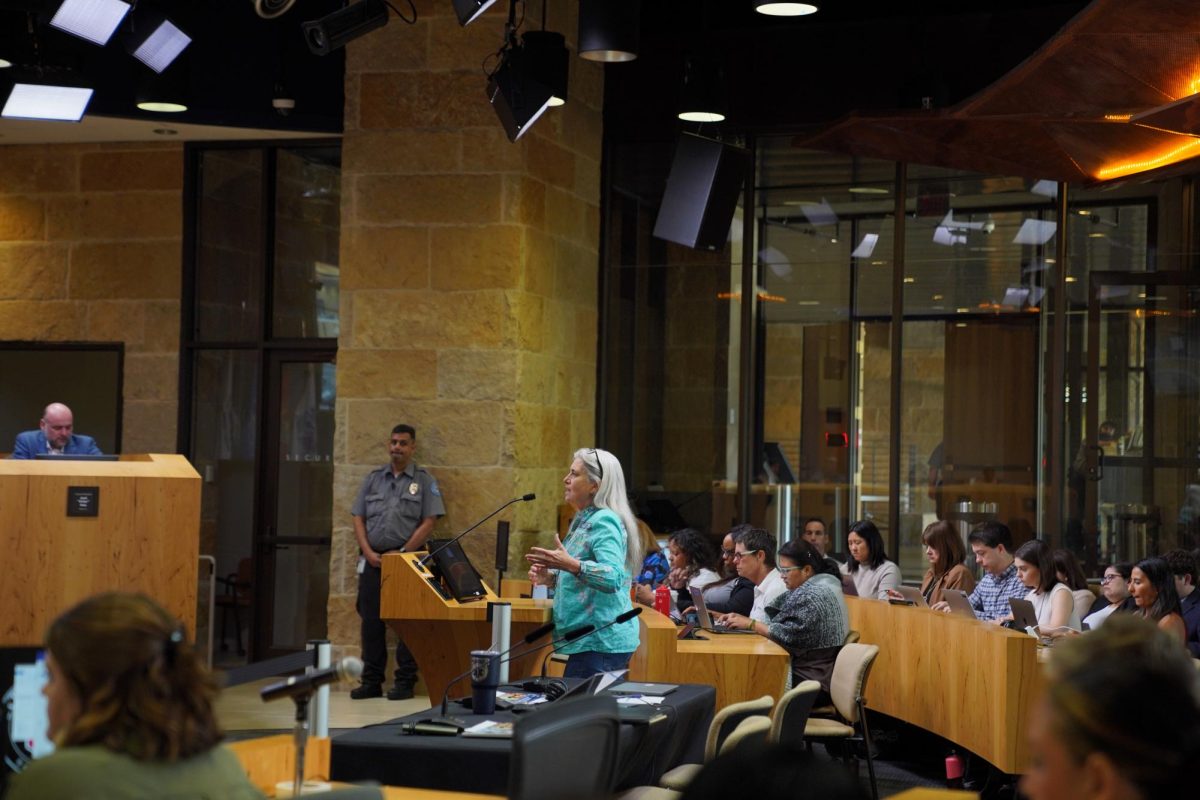The Environmental Protection Agency released new, stricter air pollution standards — now ruling that the Austin area no longer meets acceptable air quality levels.
The update is the first change to the standards since 2012. Now, the EPA considers regions with nine or more micrograms of fine particulate matter per cubic meter of air unhealthy. The Austin area met the previous EPA standard, 12 micrograms per cubic meter, but now has to reduce the fine particulate matter levels, or soot, in the air to comply with new standards.
Fine particulate matter are microscopic pollutant particles of matter in the air. These particles come from a variety of locations or activities, including Austin area power plants or car emissions, said Lea Hildebrandt Ruiz, associate professor of chemical engineering.
“(Particulate matter) is so important, because when the particles are large enough, they tend to get filtered out in our nostrils and in our mucous membranes, but when they are smaller they really can get deep into our lungs, where they can dissolve and get into our whole bloodstream,” Hildebrandt Ruiz said.
Particulate matter is more likely to cause cancer and lead to higher mortality rates and only becomes more problematic in high concentrations in the human body.
The city and its surrounding areas historically focused on keeping ozone emission levels down, said Anton Cox, air quality program manager at Capital Area Council of Governments, a council of 90 local governments and organizations.
Under the new standards, CAPCOG’s focus will shift to monitoring particulate matter levels, including investigating why levels haven’t decreased and what action needs to be taken. A grant last year allowed the organization to purchase seven new particulate matter monitors, Cox said.
“This new … standard from the EPA … adds urgency, helps us encourage others about the issue and get more participation on (particulate matter) in the region,” Cox said.
Cox said the area has two years before the EPA issues its formal nonattainment designation, or required levels of air quality. However, he said the organization is beginning to implement voluntary actions to protect public health and economic growth for the Austin area.
The projection to meet the new standard is 2032, according to the EPA. It is also estimated the “new standards will prevent up to 4,500 premature deaths and 290,000 lost workdays.”
“Right now we’re really just trying to see if we can get the word out, get more engagement and encourage voluntary actions and then look at what those low hanging fruit actions are to help us implement strategies,” Cox said. “(We) will work with the state and EPA on our long-term plan to make sure we can get into compliance as quickly as possible.”
















